The Jesuit Mission History of Madhya Pradesh Province
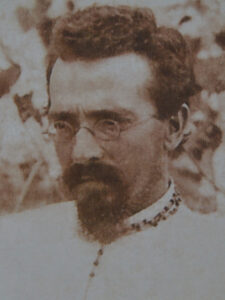 Chhotanagpur along with Jashpur and Gangpur was part of the West Bengal Jesuit Mission. In the course of time Fr. Constant Lievens, S.J. ‘the apostle of Chhotanagpur’ founded the Jesuit Mission in Chhotanagpur. Inspired by the zealous fruitful mission of Lievans many Jesuit missionaries spread all over and Jashpur-Surguja Jesuit mission was part of the great Chhotanagpur Tribal Mission. There is an immense desire in the Jesuits to serve God by serving people especially the poor and the deprived. It was such desire that impelled Fr. De Gryse, S.J. to seek permission from the King of Jashpur to do something for the development of the tribals. He was the first one to enter the Kingdom of Jashpur in the Eastern part of Madhya Pradesh on April 2, 1905. He and his fellow Jesuits initiated the work of development by education, health care and restoring the land property to tribals, which were unduly snatched by non-tribals. The sustained work of Jesuits over hundred years has borne fruits in terms of tribal education, health care, socio-cultural and socio-economic development in the Eastern part of Madhya Pradesh (now Chhattisgarh since 2000). The Jesuits are continuing the work begun by Belgian Jesuit missionaries and venturing into new geographical area with other tribal groups and Dalits to help them to make their life better.
Chhotanagpur along with Jashpur and Gangpur was part of the West Bengal Jesuit Mission. In the course of time Fr. Constant Lievens, S.J. ‘the apostle of Chhotanagpur’ founded the Jesuit Mission in Chhotanagpur. Inspired by the zealous fruitful mission of Lievans many Jesuit missionaries spread all over and Jashpur-Surguja Jesuit mission was part of the great Chhotanagpur Tribal Mission. There is an immense desire in the Jesuits to serve God by serving people especially the poor and the deprived. It was such desire that impelled Fr. De Gryse, S.J. to seek permission from the King of Jashpur to do something for the development of the tribals. He was the first one to enter the Kingdom of Jashpur in the Eastern part of Madhya Pradesh on April 2, 1905. He and his fellow Jesuits initiated the work of development by education, health care and restoring the land property to tribals, which were unduly snatched by non-tribals. The sustained work of Jesuits over hundred years has borne fruits in terms of tribal education, health care, socio-cultural and socio-economic development in the Eastern part of Madhya Pradesh (now Chhattisgarh since 2000). The Jesuits are continuing the work begun by Belgian Jesuit missionaries and venturing into new geographical area with other tribal groups and Dalits to help them to make their life better.
Madhya Pradesh province was seen as a small mission territory comprising Jashpur district alone of Ranchi Jesuit Province from 1905 till 1979. It was raised to the status of a Region in the Society of Jesus on February 6, 1979 under the Ranchi Province. The first Regional Superior was Fr. William Missiaen, S.J. The Jesuits in the Madhya Pradesh Region initiated more developmental work through primary and secondary education, socio-pastoral care, socio-cultural revival and socio-economic awareness and developmental programmes. Rev. Fr. Peter Hans Kolvenbach, S.J. the Superior General of the Society erected Madhya Pradesh Region as a full-fledged Province on April 27, 1992 and appointed Fr. Patras Minj, S.J. as the first Provincial Superior. The headquarters of the Madhya Pradesh Jesuits was at Pathalgaon till 2000. It was shifted to Bilaspur in 2001 for rendering better service to larger society of Madhya Pradesh and Chhattisgarh with many more apostolic ventures.
PIONEERS IN JASHPUR
Introduction
In order to understand the background of the Jesuit Province of Madhya Pradesh, it would be worthwhile to capture the prevailing socio-political and cultural setting in which this province evolved. The Belgian Jesuit missionaries started the Bengal Mission in the 19th Century, thus came into existence the Jesuit Province of Calcutta followed by the Province of Ranchi, out of which the Madhya Pradesh Province was formed.
The entry of the Jesuits in the state of Madhya Pradesh took place through the present day Jashpur Diocese in 1905-6. The Uraons, one of the majority indigenous communities in Jashpur, embraced Christianity first of their own free will. Hereafter the Church grew with the help of priests –mostly Jesuits initially, religious, and catechists in a phenomenal way. The following account is intended to illustrate this growth historically.
Jesuit Pioneers in Jashpur
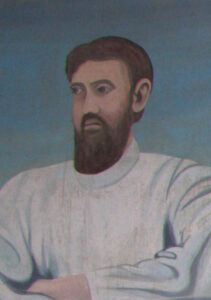 As pioneer missionaries, the Jesuits in Jashpur had to deal with a court which was predominantly Hindu, and where the moderating European influence was reduced merely to supervision provided by law, i.e., a Political Agent. According to the principles actually followed, this Agent, who was a representative of the British Government in India, was controlling the foreign relations of small States under him. He intervened only if the State itself asked for it, or in case of absolute necessity or in case of evident “maladministration”. Once a year he went round the group of States under his control, but in reality, as far as internal matters of administration were concerned, the Chief or Raja remained master in his own domain. It was well known from the history of India before the arrival of the British, how the local Rulers, Hindu or Muslim, treated the people with tyranny, injustice and exploitation. The Uraons in Jashpur experienced it in a most degrading manner.
As pioneer missionaries, the Jesuits in Jashpur had to deal with a court which was predominantly Hindu, and where the moderating European influence was reduced merely to supervision provided by law, i.e., a Political Agent. According to the principles actually followed, this Agent, who was a representative of the British Government in India, was controlling the foreign relations of small States under him. He intervened only if the State itself asked for it, or in case of absolute necessity or in case of evident “maladministration”. Once a year he went round the group of States under his control, but in reality, as far as internal matters of administration were concerned, the Chief or Raja remained master in his own domain. It was well known from the history of India before the arrival of the British, how the local Rulers, Hindu or Muslim, treated the people with tyranny, injustice and exploitation. The Uraons in Jashpur experienced it in a most degrading manner.
At the beginning of 1905, many deputations of the Uraons went to Kurdeg, which was the nearest Catholic station to the Jashpur border. It was started in 1903 and Fr. Edmund De Gryse, SJ was the in-charge of this mission station looking after an immense area including a large part of Biru in the present-day diocese of Simdega in Jharkhand, and Gangpur in the dioceses of Rourkela and Sambalpur in Odisha.
Before making a move to Jashpur, Fr. De Gryse thought it best to find out the intentions of the Raja (local ruler) about the possible establishment of a mission station there. He went to Jashpurnagar on April 2, 1905. He was received well, the conversation was cordial, but as soon as he requested him to open a mission station in Jashpur, the Raja ignored it.
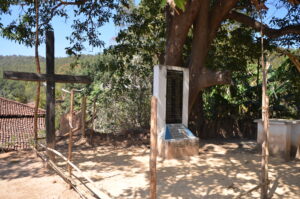 The same year, other Uraons of Khaidkona village of Jashpur approached Fr. Peter Van der Linden SJ at Katkahi of Gumla Diocese. On June 14, 1906, they begged him to come to their village and the missionary agreed, but his visit proved costly for them. The officials of the local Raja beat them up and threatened them with grave consequences for their intention to become Christians.
The same year, other Uraons of Khaidkona village of Jashpur approached Fr. Peter Van der Linden SJ at Katkahi of Gumla Diocese. On June 14, 1906, they begged him to come to their village and the missionary agreed, but his visit proved costly for them. The officials of the local Raja beat them up and threatened them with grave consequences for their intention to become Christians.
As soon as peace was restored, Fr. Peter Van der Linden SJ, and Fr. Joseph Bressers SJ set out for Khaidkona on November 20, 1906.
A poor hut built on a hillock just outside the village and abandoned by its owner, was the lodging of the two missionaries for the night. On the verandah of this hut, they offered Holy Mass on November 21, 1906. It was the first time that the Holy Mass was offered in the territory of Jashpur, which marked the beginning of Christianity in the area.
In order to safeguard and spread Christianity smoothly, Archbishop Brice Meuleman SJ, together with other missionaries, arrived at the following agreement with the ruler of the Jashpur State on 2 February 1907 in the presence of Mr. Laurie, I.C.S., British Political Agent:
- All catechists are to be literate, they must be approved by the Raja, and they are not to work in Jashpur without their certificate. The Raja shall inform the missionary if he objects to a preacher. He agreed to give the certificates without undue delay.
- The chundi (tuft which the tribals had before getting baptized) cutting shall be done only in the presence of the missionary.
- Consent for the erection of a chapel must be obtained from the Raja, who will remain in possession of the ground. Application for consent to be made only after the adoption of the Christian religion by a sufficient number of villagers. In this question the missionaries must use discretion and the Raja must be just.
- All the catechists shall be made to understand their duty of preaching obedience to the Raja; no hopes of release from civic duties to be held out. If in any area the people show disloyalty, the Raja will refer the matter to the missionaries; if no notice is taken of the Raja’s complaints, he will, after consulting the Political Agent, revoke the catechist’s license.
- The Raja agreed not to force the people to do begari (unpaid forced labour) on Sundays, Christmas and Good Friday.
- If any party has to complain, the Raja and the missionaries will first endeavour to settle the dispute among themselves.
- The Raja agreed on these terms not to molest the Christians.
Pillar Mission Stations
- Ginabahar: During the
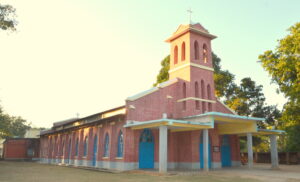 first decade of 20th century the Jesuits inKurdeg, now in the Simdega Diocese of Jharkhand, were in touch with many villages in Jashpur. Frs. Edmund De Gryse SJ and Louis Van Hoeck SJ kept touring the villages on
first decade of 20th century the Jesuits inKurdeg, now in the Simdega Diocese of Jharkhand, were in touch with many villages in Jashpur. Frs. Edmund De Gryse SJ and Louis Van Hoeck SJ kept touring the villages on  and off despite some opposition from the Raja of Jashpur. Fr. Louis Van Hoeck SJ was very much impressed by the simple lifestyle of the Uraon tribals and wanted to work among them, but he was transferred to Ranchi in November 1909 to become the Rector of Manresa House.
and off despite some opposition from the Raja of Jashpur. Fr. Louis Van Hoeck SJ was very much impressed by the simple lifestyle of the Uraon tribals and wanted to work among them, but he was transferred to Ranchi in November 1909 to become the Rector of Manresa House.
Fr. Cyril Van den Driessche SJ succeeded him and continued the work. June 13, 1912 was a memorable day when he came to Ginabahar and pitched his tent under a banyan tree. It was from this tent that the Gospel message was carried on all around the villages and the Uraons accepted Christianity in big number. In 1915 the Ginabahar Parish got established and made rapid progress in faith.
- Gholeng: Fr. August Bossaers, SJ from Majhatoli was
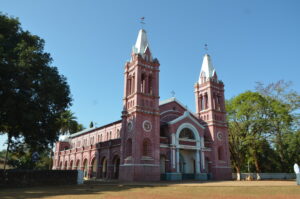 looking after the sub-station at Gholeng from October 1914. Considering the need of starting a new parish there, he offered holy mass in an
looking after the sub-station at Gholeng from October 1914. Considering the need of starting a new parish there, he offered holy mass in an 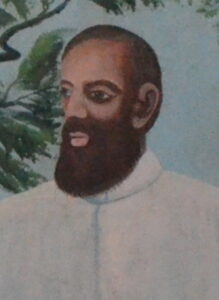 under-constructio chapel on June 15, 1917 on the feast day of the Sacred Heart. Afterwards in 1918 he started the parish and became its first parish priest. This parish became the centre of Christianity in the area. From here other parishes were opened.
under-constructio chapel on June 15, 1917 on the feast day of the Sacred Heart. Afterwards in 1918 he started the parish and became its first parish priest. This parish became the centre of Christianity in the area. From here other parishes were opened.
- Tapkara: Fr om the beginning of 20th
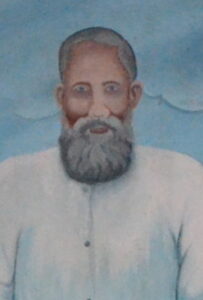 century already the good news of Jesus had reached this area and many Uraons had become
century already the good news of Jesus had reached this area and many Uraons had become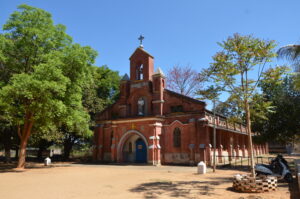 Catholics. However, they suffered very cruel persecution in the hands of the ruling Raja and his officials. The persecution reached its climax when many of the new Catholics were beaten to death and thrown away in the villages of Namni and Lathbora. In spite of the persecution, Fr. Paul Feron SJ from Ginabahar visited these villages in December 1922 facing the agents of the above persecution fearlessly. On January 26, 1923, he left Ginabahar and started the parish at Tapkara and became its Parish Priest.
Catholics. However, they suffered very cruel persecution in the hands of the ruling Raja and his officials. The persecution reached its climax when many of the new Catholics were beaten to death and thrown away in the villages of Namni and Lathbora. In spite of the persecution, Fr. Paul Feron SJ from Ginabahar visited these villages in December 1922 facing the agents of the above persecution fearlessly. On January 26, 1923, he left Ginabahar and started the parish at Tapkara and became its Parish Priest.
- Musgutri: Frs. Edmund De Gryse SJ and Louis Van Hoeck SJ were the pioneers in evangelizing the Bagicha and Musgutri areas as early
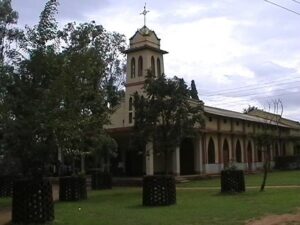 as 1907. In the beginning, these areas were looked after from the Ginabahar parish. Fr. Peter d’Alcantara SJ came to Musgutri on June 29, 1923 and started the parish.
as 1907. In the beginning, these areas were looked after from the Ginabahar parish. Fr. Peter d’Alcantara SJ came to Musgutri on June 29, 1923 and started the parish.
- Ambakona: In spite of much hardship toface, the missionaries managed to open a sub-station at
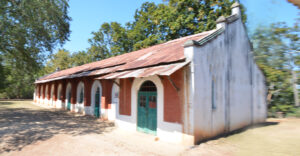 Ambakona in February 1910. Fr. Peter Van der Linden SJ was made the parish in-charge of Ambakona area. Seeing the urgent need of taking care of the Catholic community, Fr. Albert Demonceau SJ came to Ambakona in July 1923 and started the parish.
Ambakona in February 1910. Fr. Peter Van der Linden SJ was made the parish in-charge of Ambakona area. Seeing the urgent need of taking care of the Catholic community, Fr. Albert Demonceau SJ came to Ambakona in July 1923 and started the parish.
Need and Search for a High School
Already in 1932 Fr. Peter d’Alcantara SJ was in favour of beginning a high school at once. As to the location, he considered Gholeng as the right place to open the high school. Interestingly, Fr. Paul Floor wanted to open a high school in Jashpur itself. Meanwhile, Ginabahar was considered as a more suitable place and more central for the whole of Jashpur. It was by far the largest parish in Jashpur, perhaps the largest in the whole of the Ranchi Mission. In June 1937, there were 16,840
Christians. It had more school buildings and a large hall built by Fr. Jules Van Oostayen SJ. There was more place there than at Gholeng for extension of buildings and playground at least for the initial needs of a High School. Efforts would be made meanwhile to acquire a large and permanent site at Kunkuri.
The stage for the opening of the high school seemed set and Bishop Oscar Sevrin SJ advised the Jesuits to open the high school at Ginabahar. Therefore, they added standard VIII to the existing middle school from January 1947 with Fr. Vincent Tigga S.J. as Headmaster and Scholastic Francis Crick SJ as his assistant. However, Fr. De Jonghe SJ, Mission Superior, withdrew Fr. Vincent Tigga SJ and Scholastic Francis Crick SJ from the management of the high school at Ginabahar before the end of 1947 and gave them new assignments. All the same, new developments concerning this school took place later on and the high school once begun continued to grow step by step.
Expansion and Emergence of the Jesuit Mission
In December 1977, Fr. Sidon Maes SJ was the Mission Superior of Madhya Pradesh and Fr. Joseph Binje SJ was the Dean of Ambikapur. In 1978 Fr. Philip Ekka SJ, Provincial of Ranchi, was appointed Bishop of Ambikapur. Father Pedro Arrupe SJ, Superior General of the Society of Jesus, created the Independent Region of Madhya Pradesh in 1979 and appointed Fr. William Missiaen SJ as its first Major Superior. There were 45 Jesuit priests in the New Region. Fr. Delbeeke SJ was the Vice- Provincial of Ranchi at the time of the division. This independent Region became a Province in 1992 with Fr. Patras Minj SJ as its first Provincial.
Dean of Ambikapur. In 1978 Fr. Philip Ekka SJ, Provincial of Ranchi, was appointed Bishop of Ambikapur. Father Pedro Arrupe SJ, Superior General of the Society of Jesus, created the Independent Region of Madhya Pradesh in 1979 and appointed Fr. William Missiaen SJ as its first Major Superior. There were 45 Jesuit priests in the New Region. Fr. Delbeeke SJ was the Vice- Provincial of Ranchi at the time of the division. This independent Region became a Province in 1992 with Fr. Patras Minj SJ as its first Provincial.
Major Superiors Leadership in the Mission
| Province/ Region | Year | Major Superior |
|---|---|---|
| Ranchi: Vice-Province | 1953 | Fr. John Baptist Moyersoen SJ |
| Ranchi Province | 1956 | Fr. Francis Crick SJ |
| Raigarh-Ambikapur Region (Dependent) | 1954 | Fr. John Bulckens SJ* |
| * Regional Superiors of dependent Region were not Major Superiors | 1963 | Fr. Ferdinand Callebaut SJ * |
| Jul 1964 | Fr. Martin Vos SJ* | |
| Oct 1964 | Fr. Verstraete Luke SJ* | |
| 1967 | Fr. Joseph Binje SJ* | |
| 1972 | Fr. Sidon Maes SJ* | |
| Madhya Pradesh Region (Independent) All superiors of the Independent Region | 1979 | Fr. William Missiaen SJ |
| 1985 | Fr. Pascal Topno SJ | |
| 1986 | Fr. Patrick Kullu SJ | |
| Madhya Pradesh Province | 1992 | Fr. Patras Minj SJ |
| 1996 | Fr. Theodore Toppo (T) SJ |
|
| 2003 | Fr. Amritlal Toppo SJ | |
| 2009 | Fr. Boniface Panna SJ | |
| 2014 | Fr. Kalyanus Minj SJ | |
| 2019 | Fr. Ranjit Tigga S.J. |
New Apostolic Initiatives and Missions
In 1992, Fr. Superior General of the Society wrote a letter to Fr. Patrick Kullu, Regional Superior, that he was establishing Madhya Pradesh as a New Province. There were many ethnic groups in the State. Fr. General advised that the new Province should expand more among other ethnic groups and areas. He repeated the same when he wrote to Fr. Patras Minj appointing him first Provincial of the Madhya Pradesh Province.
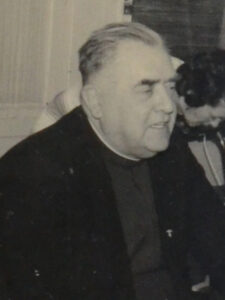 Dalit Mission
Dalit Mission
The Dalit mission in Raigarh was initiated as early as 1954 by Fr. Edward De Meulder SJ together with Fr. Renat Van den Abeele SJ with strong desire to uplift Dalits in socio-economic, educational, and pastoral fields. He covered the entire area of Dalit population in Raigarh, Sarangarh, Bilaspur, and Raipur.
However one might differ from the ways of evangelisation adopted by Fr. De Meulder SJ, it has to be admitted that he had the charisma to touch the hearts of Dalits. Fr. Van den Abeele SJ was his predecessor for 8 years and his companion later on had the following to say: “I brought the same CRS supplies but there was none to receive it. People refused to accept any help from me. After Fr. De Meulder arrived, the situation changed completely. They came in hundreds with drums and musical instruments, with songs and laughter. The secret was that he touched their heart.” Fr. Antony Parapullil SJ spent two months with him, living and working and watching closely what was happening. He said, “Fr. De Meulder raised the hope of Dalits high from a hopeless oppressed situation under high caste people. How to touch their heart today? Now their situation is a little different. They have discovered their power as a group and many local leaders have emerged. How are the MP Jesuits going to approach them today? What would be their policy for them? What type of persons could really make a difference in their midst?”
Together with evangelization Fr. De Meulder initiated educational institutions and gave the name of (1) Bharat Mata School Bilaspur and (2) Bharat Mata School Raipur. This mission is being continued by Jesuits at Boirdadar, Mauhapali, Baramkela, and Hasda.
Kodaku Mission
In the early 1960s the Jesuits of Madhya Pradesh Province came in contact with the Kodaku tribe in the district of Surguja and ever since they started working among them. Fr. Aemilanus Lakra SJ was the pioneer in this work. He felt that only education would bring about changes in the life of the Kodakus.
In 1971, Br. Joseph Solozabal SJ came to Jhingo where Fr. Aemilianus was the parish priest, and they together carried forward socio-economic and educational work among the Uraons, Kodakus and Korwas. Among these communities, the Kodakus could be singled out as the main priority group on whom Br. Solo focused all his attention.
Br. Solo ran “Korwa Project” from 1972 for the education of the Korwa–Kodaku children from Lahasun Path and its adjoining areas. They were brought to Jhingo for schooling which continued till 1990. The “Village Development Programme” proposed and run by Br. Solo was quite effective. It was to ensure economic development of the people in the area. It was for this reason that Jhingo was made an Agriculture Training Centre.
The area of this mission was extended to the neighbouring parishes of Kodaura, Pratappur, Wadrafnagar and Bagra.
Fr. Patras Minj SJ, the first Provincial, decided that the centre for the Kodaku Mission would be Dhanwarkala and appointed Fr. Sidon Maes in-charge of 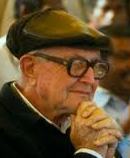 this centre for the new mission in 1994. The centre at Dhanwarkala and Jeevan Vikas Maitri at Pathalgaon, have been working together for this development since 1997. Through social, economic, educational and health services significant changes have been taking place among them for the better. Before this inititative they were living in isolation, but now they are interacting with other communities and social groups.
this centre for the new mission in 1994. The centre at Dhanwarkala and Jeevan Vikas Maitri at Pathalgaon, have been working together for this development since 1997. Through social, economic, educational and health services significant changes have been taking place among them for the better. Before this inititative they were living in isolation, but now they are interacting with other communities and social groups.
In the socio-economic development of the Kodakus, the “Kodaku Community Development” (KCD) Programme guided by Francis Geerts, Nephew of Fr. Sidon Maes since
1996, played a vital role. The main objective of the programme was holistic development of the Kodaku people. In the beginning, only 10 villages were selected for the project which was later extended to 69 villages and thereafter yet to another 65 more Kodaku villages in the parishes of Dhanwar, Kodaura, Adrai and Jhingo.
Gond Mission
Among the Jesuits in the Madhya Pradesh Province, it was Fr. Binje who first worked among the Gonds. As Parish Priest of Ambikapur in the late 1960s till in the early 1980s he had accepted a small group of Gond leaders in the Catholic fold. Unfortunately, this Catholic community of Gonds was not big enough for mutual support in their prevailing social setting. Probably, that was the main reason why this community could not persevere in the Catholic Church.
In the Ambikapur diocese and beyond there were a number of groups belonging to the Gond and other tribes. No one was working among them apart from the failed attempt of Fr. Binje SJ. It was in this context that Bishop Philip Ekka SJ approached Fr. William Missiaen SJ, Superior of Madhya Pradesh Region, in 1981 for some Jesuits who would be able to work among the Gond and other tribes in the Koriya area.
In 1987, the Gond mission was entrusted to Fr Anthony Parapullil SJ to work in the Koriya plateau. Fr. Parapullil reached Baikunthpur in July 1987. After staying there for some weeks, he settled down at the village of Bhaiswar on August 7, 1987. After 3 years Bhaiswar became the Jesuitcentre for Gond Mission in 1990.
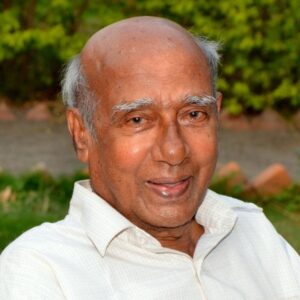
In 1992 the Province wanted to expand the Gond mission to Jabalpur diocese. In the meantime, Bishop M. Theophane of the Jabalpur diocese invited the Jesuits to develop the district of Shahdol. The Province accepted this invitation and Fr. Parapullil was asked in 1993 to conduct a survey of the districts of Koriya and Shahdol. Through this survey and discussions thereafter, there emerged some centres for immediate development such as Kotma, Umaria, Janakpur and Kota. Therefore in 1994 Frs. Philemon Lakra SJ, Boniface Tigga SJ, Barnabas Toppo SJ and Aemilianus Lakra SJ took up these centres under their care. Gond mission has 6 centres today: Bhaiswar, Kotma, Kota, Umaria, Manpur and Nimha.
Barela Mission
Most Rev. Pascal Topno, S.J., Archbishop of Bhopal in office, wrote a letter to the Provincial of Madhya Pradesh Province, requesting him to open two Pastoral Centres in the Bhopal Archdiocese – one Jesuit centre and another to be developed for the diocese. The Jesuit community at Campion School Bhopal had also been thinking and discussing about the need of expanding the apostolate with some more centres in Madhya Pradesh.
Fr. Michael Ekka came to Campion School, Bhopal in June 2009. He, as a member of Campion School Bhopal, began to look for possible mission area. He stayed for one year till June 2010 at Sohankheda with Rev. Ishwardas Minj, who had been doing pioneering work successfully among the Barela tribe.
After exploring several locations, he went to a village called Sonkotta to stay there. One Barela family offered their cowshed for him to stay which he turned into a sort of living room. It had dry branches erected together to serve as its wall. In June 2011 he moved to Ladkui and began to live in a rented room. After acquiring a piece of land at vil- lage Mariado, he built a small hut-like residence, Campion Ashram, in 2011. He continued his contact with the Barelas in the neighbouring villages. The members of Campion Community at Bhopal, in consultation with the Provincial, thought that educating their children would render the best service to their tribe. Therefore Campion School at Mariado was opened in 2014.
Founders of Parishes
1. Jashpur Mission
| Founder | Parish | Year |
|---|---|---|
| Fr. Cyril Van den Driessche, SJ | Ginabahar | 1915 |
| Fr. August Bossaers, SJ | Gholeng | 1918 |
| Fr. Paul Feron, SJ | Tapkara | Jan 1923 |
| Fr. Peter d’Alcantara, SJ | Musgutri | Jun 1923 |
| Fr. Albert Demonceau, SJ | Ambakona | Jul 1923 |
| Fr. Charles Timmerman SJ | Jokbahla | 1951 |
| Fr. Louis Berge SJ | Pathalgaon | 1953 |
| Fr. John Indekeu SJ | Saraitoli | 1954 |
| Fr. James Nagant SJ | Tamamunda | 1955 |
| Kansabel | 1956 | |
| Fr. Joseph Surin SJ | Duldula | 1956 |
| Fr. Medard Vermeire SJ | Ghaghra | 1957 (1937) |
| Fr. Pancratius Toppo SJ | Portenga | 1966 |
| Fr. Martin Vos SJ | Kunkuri | 1971 |
| Fr. Paul Bulckens | Shantibhawan | 1976 |
| Fr. James Nagant SJ | Bhelwa | 1981 |
| Fr. James Nagant SJ | Darupisa | 1983 |
| Fr. Lawrence Van Roey SJ | Jaria | 1983 |
| Fr. John Van Emmerik SJ | Ekamba | 1985 |
| Fr. James Nagant SJ | Kharwatoli | 1986 |
| Fr. Paul Bulckens SJ | Bara Koronja | 1989 |
Founders of Parishes
2. Surguja Mission
| Founder | Parish | Year |
|---|---|---|
| Fr. Lawrence Van Roey SJ | Ambikapur | 1951 |
| Fr. Vincent Tigga SJ | Manpur | 1960 |
| Fr. Joseph Surin SJ | Baikunthpur | 1966 |
| Fr. Antony Kadukunnel SJ | Jhingo | 1968 |
| Fr. Joseph Binje SJ | Bishrampur | 1970 |
| Fr. Vincent Tigga SJ | Larangi | 1970 |
| Fr. Louis De Raedt SJ | Manendragarh | 1977 |
| Fr. John Bulckens SJ | Pathrai | 1979 |
| Fr. Aemilianus Lakra SJ | Kodaura | 1980 |
| Fr. Joseph Binje SJ | Bargawan | 1981 |
| Wadrafnagar | 1982 | |
| Pratappur | 1985 | |
| Jagnathpur | 1986 | |
| Fr. Louis Berge SJ | Junadih | 1986 |
| Sur | 1987 | |
| Fr. Marcus Lugun SJ | Bagra | 1987 |
| Fr. Theodore Toppo SJ | Jamdara | 1988 |
| Fr. Philemon Lakra SJ | Sarbhoka (Chirmiri) | 1991 |
| Fr. Marcus Lugun SJ | Bhatgaon | 1991 |
| Fr. Louis Berge SJ | Rai | 1991 |
| Fr. Cyril R. Tigga SJ | Bhaiyathan | 1993 |
| Fr. Barnabas Toppo SJ | Janakpur | 1994 |
| Fr. James Tirkey SJ | Kandakhar | 1996 |
| Fr. Joseph Binje SJ | Lohridol | 1997 |
| Fr. Paulus Kerketta SJ | Udaipur | 1997 |
| Fr. Raphael Tirkey SJ | Kanchan Nagar | 2000 |
| Fr. Joseph A. Lakra SJ | Namna | 2006 |
Founders of Parishes
3. Raigarh Mission
| Founder | Parish | Year |
|---|---|---|
| Fr. Francis Crick SJ | Birsingha | 1953 |
| Fr. Renat Van den Abeele SJ | Raigarh | 1955 |
| Fr. Edward De Meulder SJ | (Pioneer) Panchdhar | 1957 |
| Fr. Edward De Meulder SJ | (Pioneer) Banhar | 1957 |
| Fr. John Bulckens SJ | Bairbandh | 1964 |
| Fr. Theodore Toppo SJ | Dharamjaigarh | 1970 |
| Fr. Sidon Maes SJ | Khamhar | 1985 |
| Fr. William Missiaen SJ | Boirdadar | 1993 |
| Apostolates | Estd. |
|---|---|
| St John Berchmans Church | 1994 |
| St Xavier School | 1996 |
| Collaborators: | |
| Sisters of Charity of Jesus and Mary (SCJM) | |
| Attached to Xavier Sadan, Umaria: | |
| Xavier Niketan, Manpur | 2004 |
| St. Xavier’s School, Manpur | 2010 |
| Xavier Niwas, Nimha | 2010 |
| St. Xavier’s School, Nimha | 2011 |
| Collaborators: | |
| Sisters of St Joseph of Tarbes | |
Former Regional Superiors Leadership
- Fr. John Bulckens S.J. – Delegate of the Ranchi Provincial Superior till 1959 (12-02-59) Regional Superior till 1993
- Fr. Callebout, S.J. – May 1963 till September 1964
- Fr. Luc Vestraet, S.J.- October 1964 till November 1966
- Fr. Jose Binje, S.J.- December 1966 till January 1973
- Fr. Sidon Maes, S.J.-January 1973 till 6 February 1979
- Fr. William Missiaen, S.J.-6 February 1979 till 21 February 1985
- Fr. Pascal Topno, S.J.- 21 February 1985 till 30 November 1985
- Fr. Polycarp Tirkey, S.J.-Acting 28 December till 2 April 1986 Acting
- Fr. Patrick Kullu, S.J.-2 April 1986 till 27 April 1992
